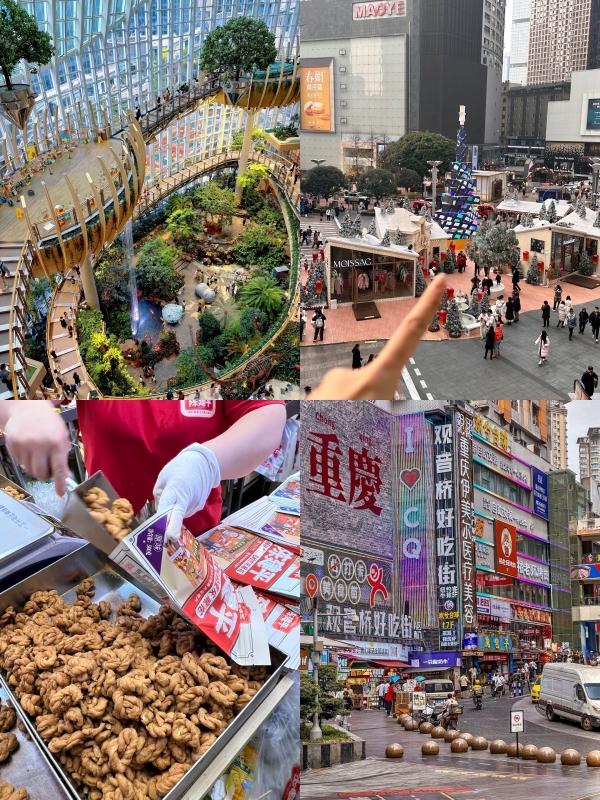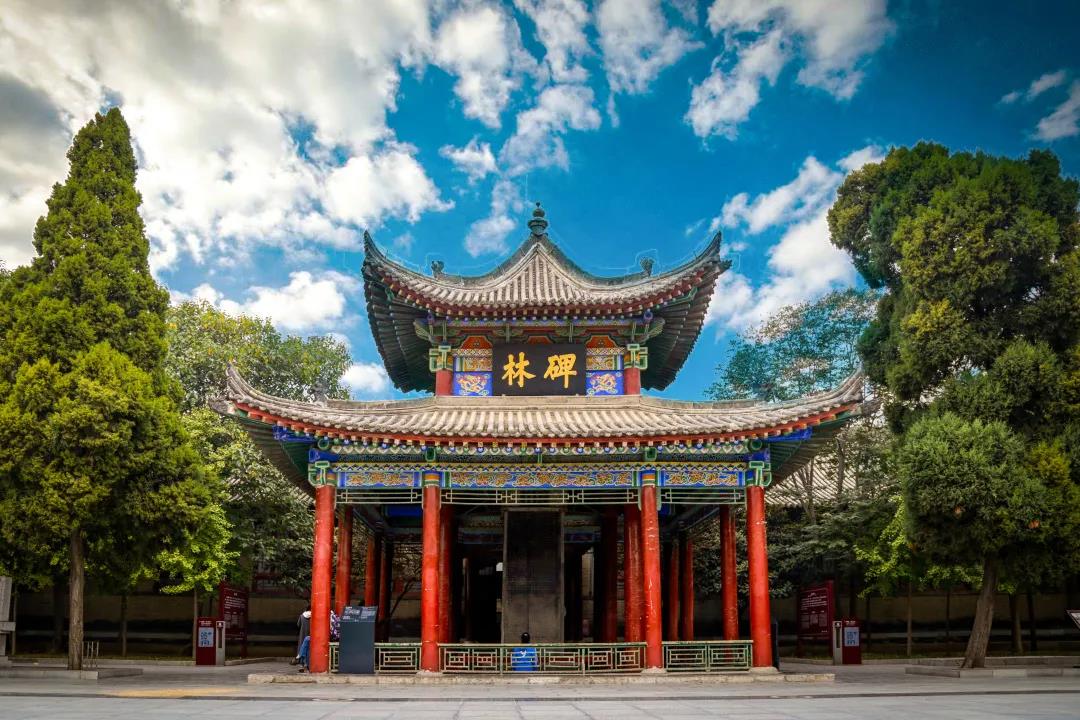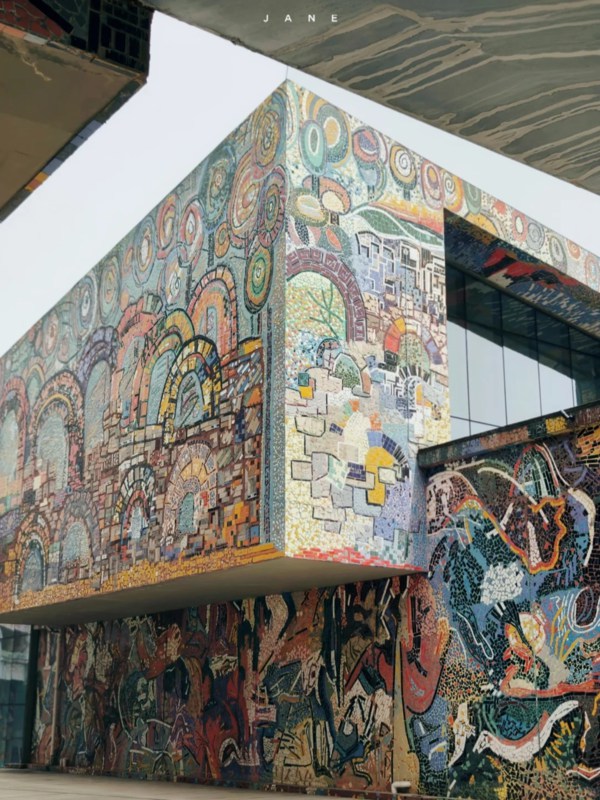In Chongqing’s busiest downtown block, the Chongqing Art Museum stands like a challenge to the glass towers around it. Its chopstick-inspired structure draws crowds with phones out, but it’s what happens inside—traditional ink paintings, edgy installations—that keeps people coming back. Think of it as the city’s ever-changing creative pulse.
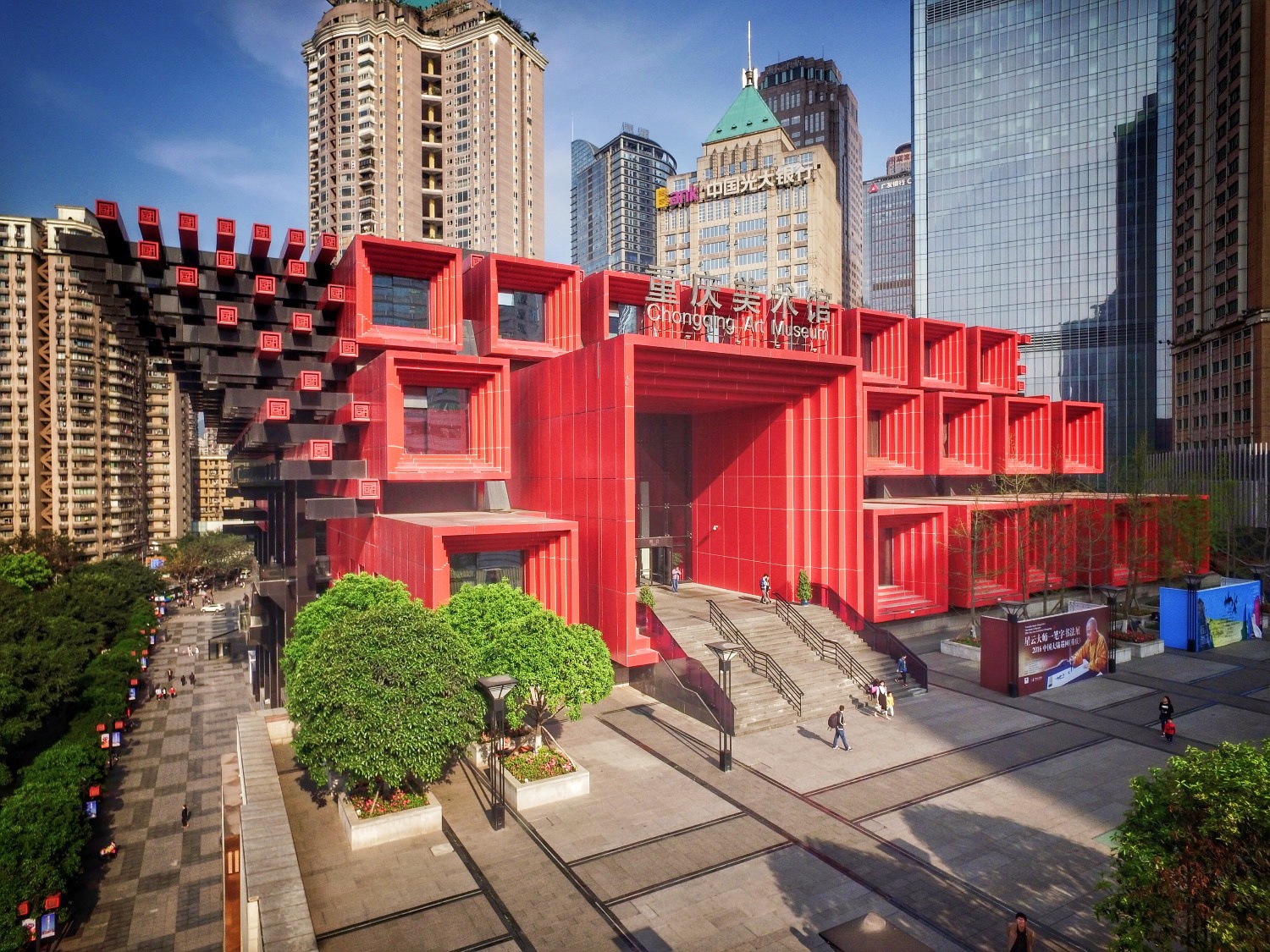
Chongqing Art Museum
Architectural Identity of the Chongqing Art Museum
The building does not look at first sight anything much like a museum. When taken from the side, it looks a bit like someone’s dropped a big red and black bundle of chopsticks in the middle of Jiefangbei—like something from a child’s game of pick-up sticks. But the interlaced beam system here is not some random pattern. According to the Guotai Art Center’s official literature, the red lines come to a point formed by the word “国” (nation). The handle of each line extends downward as if the tip were a spearhead; at the other end there’s a black beam. This makes visual sense from different levels: both inside and at street level. Locals say this shape also suggests Chongqing hotpot chopsticks in mid-swirl. That would fit right in.
At daybreak, the museum building is a striking silhouette against the teeming sky. At night, with its sideways lighting, it’s completely changed again—beams glowing like hot metal from the hearth. On the square outside, people often stop mid-stroll to raise their phones. Yesterday, I saw an itinerant rock singer sitting at the foot of one beam like it was a photo studio backdrop. He shouted to the crowd, “Let’s take pictures!” That photo ended up on Xiaohongshu, and the scene looked so alive. The museum’s interior seems to get busier almost every time. This is a design that almost can’t help but make you stop, look, and—whether you planned to or not—take a picture.
Curious about what else to see around Jiefangbei? Our travel guide is here to help you plan your stroll.
Exhibitions and Cultural Activities
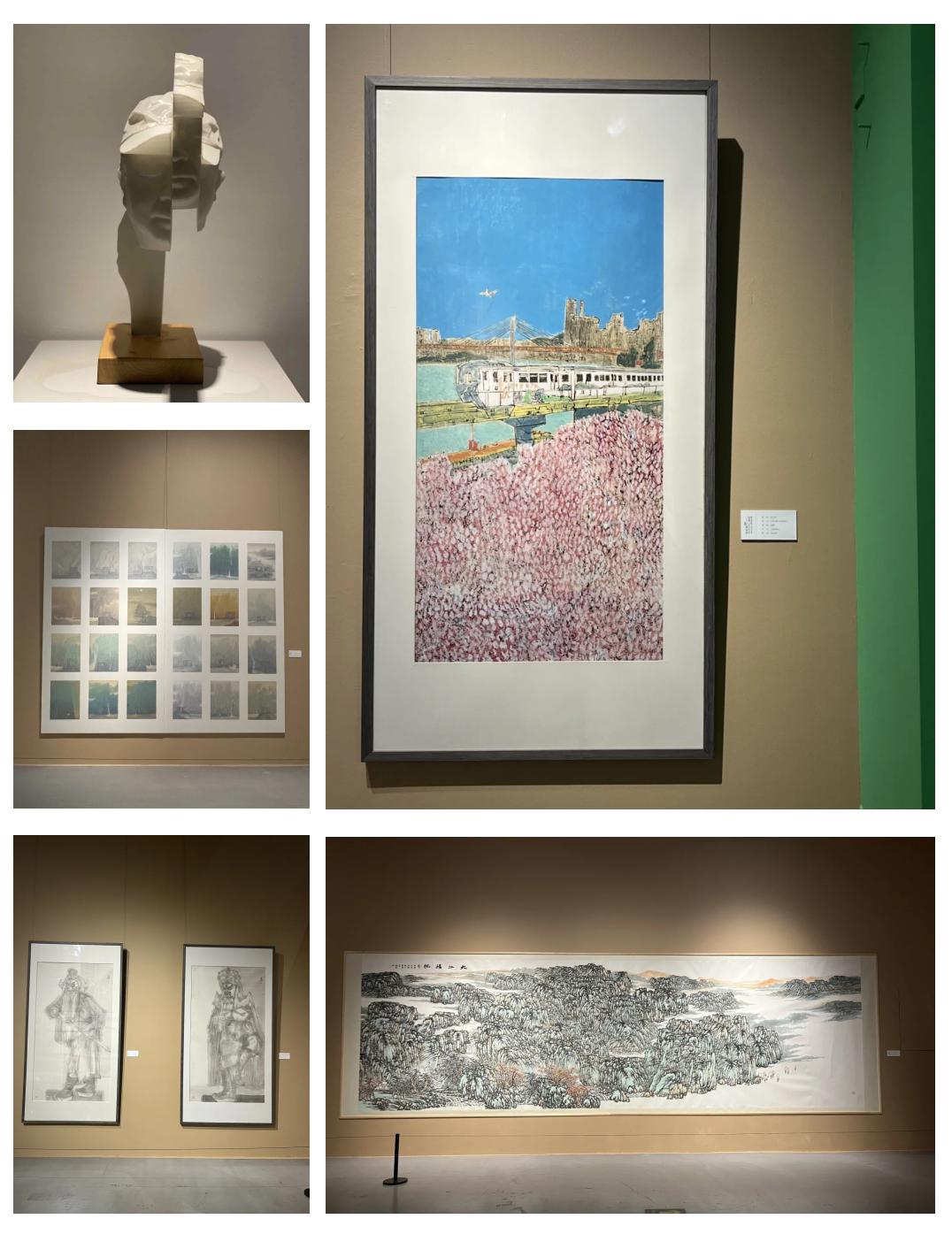
Calligraphy and painting collections inside the Chongqing Art Museum
Permanent Collections – From Traditional to Contemporary
Once you step inside the Chongqing Art Museum, the noise from Jiefangbei Street recedes. It takes on something gentler: wood floors, muted spotlights, the faint smell of lacquer. The museum holds a deep collection, with more than 10,000 pieces. There are traditional Chinese ink-and-wash paintings and a dyeing technique known as woodblock printing. If someone lets you, you can even hold those small-scale sculptures in your hands. Some pieces seem almost too fragile for the crowded city outside; a 19th-century landscape painting lights up the ink with quiet authority.
In the past few years, the Chongqing Art Museum has brought in unexpected productions. One autumn, its halls were filled with an international photography exhibition—polar ice hung beside portraits of residents in remote Yunnan. The cold and the heat glared at each other from opposite walls. That same year, they held a cross-media art exhibition again. Video projections blended with silk-screened installations over entire gallery floors. The white walls became a moving, textured narrative. Don’t expect a static archive here. The space is mutable, changing in a way that almost mirrors the city it inhabits.
Temporary Exhibitions and Cultural Exchange
The Chongqing Art Museum has something new at any time, redisplaying itself every few months with a different mood. One season, they may create an exhibit of Japanese contemporary ceramics, but next season bring visitors an exchange between Sichuan and European painters. In many instances, they also offer public lectures or hands-on workshops related to these themes. One afternoon, I walked in on a printmaking class, the scent of fresh ink drifting right up through the main stairway.
One visit I’ll never forget was to the third floor. This sculptor, a Sichuan province native, displayed his bronzes alongside weathered wood. The gallery was almost empty—just a pair of people silently copying in one corner. Through the space came the low hum of projectors from the adjacent media center. It felt like a much more informal kind of exhibition—perhaps even an extension of life itself by living artists. But in those great metropolises… that kind of thing just doesn’t happen often anymore. It’s still fresh in my memory today, whenever I walk past that building.
Looking for another spot rich in culture? Explore Guangzhou Museum of Art 2025: Discover Lingnan Heritage, Global Exhibitions, and Visitor Tips
Admission and Opening Hours
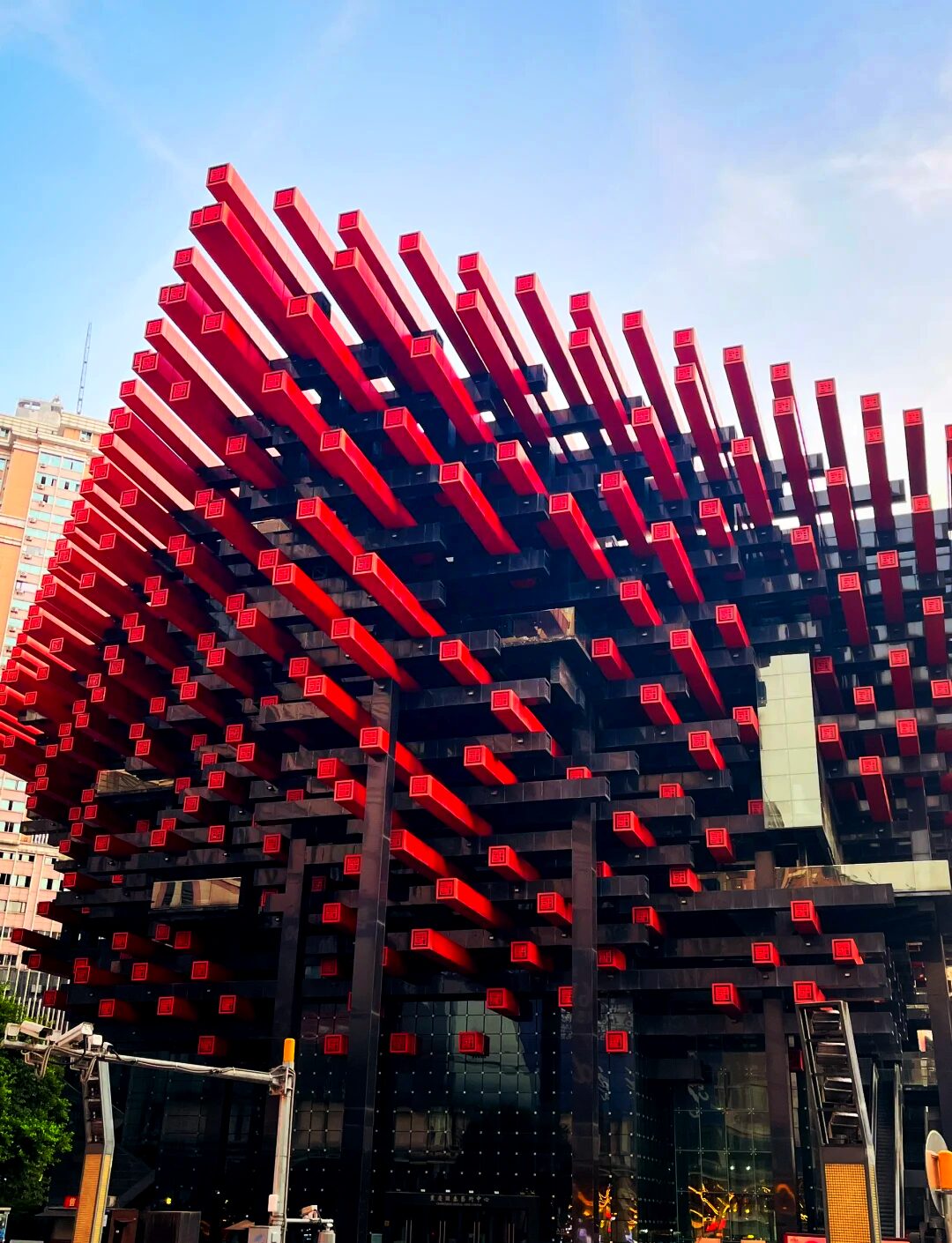
Novel red chopstick-inspired appearance
One of those rare city landmarks that doesn’t charge anything to get into — the Chongqing Art Museum. It’s free of charge, which means you can just turn up whenever you please. Opening hours are Tuesday to Sunday, 9:00 AM to 5:00 PM, with the latest entry at 4:30 PM sharp—and yes, they do close punctually like all Chinese museums.
But not every day is business as usual—on major national holidays and during large special exhibitions, you may find crowd limits imposed or be required to get tickets for timed entry. Another time when it’s essential to check in advance is if the official website or its WeChat account post updates on any major exhibit. These come at a timely rate, maybe one message every other day, and in a city where plans change like the weather, that little step can save you a lot.
Location and Map of the Chongqing Art Museum
Transportation and Visit Planning
Metro Access and Walking Routes
The easiest way to reach the Chongqing Art Museum is by taking Metro Line 2 to Linjiangmen Station and heading out Exit D. From there, it’s a short walk—about five minutes if you don’t get distracted. But this is Jiefangbei, so you probably will. The streets here are lined with everything from steaming bowls of xiao mian to vendors selling skewers dripping with chili oil.
If you’re coming from Hongyadong, the walk is doable in under 15 minutes, though you might stop to snap the stilted buildings glowing over the Jialing River. Pairing the museum with a ride on the Yangtze River Cableway makes for a neat half-day: start in the morning at Hongyadong for photos, stroll to the museum before lunch, then cross the river in a cable car as the sun slides lower. It’s the kind of route where you see three sides of Chongqing in a single sweep—and still have time for hotpot before the night lights hit.Check out this guide to make the most of your trip to Hongyadong.
Best Time for Photography and Tours
The mood of Chongqing Art Museum is determined by time. The glass and steel structures catch the softer light of twilight, so that by evening, when embers are glowing, the building’s red and black beams can be lovely again. That’s when this piece of architecture turns into dynamic, animated theater, a part of the city beyond living rooms or family quarters. You can stand at the pedestrian island opposite for eye-level shots, or try shooting from high up in the Chongqing Times Square Mall for wider postcard-style frames.
Daytime has its own allure—the galleries are bustling with sunshine and ink paintings sparkle on closer inspection. Most visitors start arriving around mid-morning, so you can have the place to yourself if you slip in right after it opens. On one trip, I stood beside a window in the third-floor hall and watched sunlight pour over the Jiefangbei skyline. The exhibits looked almost as though they had been thrown together hastily, but even these details are what you need to escape the boredom of a mandatory excursion.
Exploring Chongqing in just three days? You won’t want to miss this three-day itinerary.
Chongqing in the rain has its own charm, and this guide shows you how to enjoy it to the fullest.
Frequently Asked Questions (FAQs)
Q: Are there guided tours available at the Chongqing Art Museum?
Yes, but they’re not always advertised in English. The museum occasionally offers guided tours for special exhibitions, usually led by local art scholars or curators. If you don’t speak Mandarin, it’s best to check with the front desk in advance—they sometimes arrange bilingual guides if booked early. Alternatively, renting an audio guide (when available) can help you navigate the collection without missing key details.
Q: Can visitors sketch or paint inside the museum?
In most areas, yes—quiet sketching is allowed as long as you use dry materials like pencils or charcoal, and avoid blocking walkways. However, easels or wet media such as watercolor and oil paint are usually not permitted. Always ask the staff before you start, as rules can change depending on the current exhibition.
Q: Is photography allowed inside all exhibition halls?
Not in every room. While photography without flash is often fine in the permanent collection areas, some temporary exhibitions—especially those with sensitive or loaned works—prohibit any kind of photography. Look for signage at the entrance of each hall or check with staff to avoid issues.
Q: Are there art-related souvenirs or books for sale?
Yes, the museum shop stocks exhibition catalogues, postcards, posters, and sometimes limited-edition prints. You can also find books on Chongqing’s art history and design objects inspired by the museum’s architecture. Items tied to current exhibitions sell out fast, so buy them before your visit ends.
Q: Does the museum host events for children or families?
Yes, family-friendly events are often scheduled during school holidays, including children’s art workshops, storytelling sessions, and interactive tours. These activities are mostly in Mandarin, but the hands-on nature means kids can still enjoy them without understanding every word.
